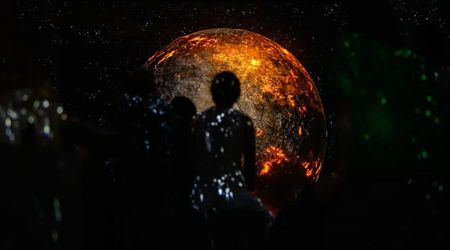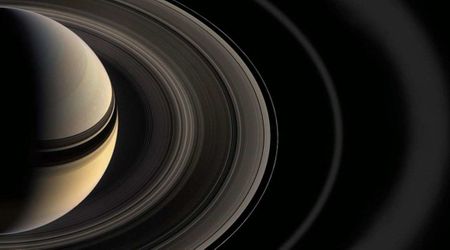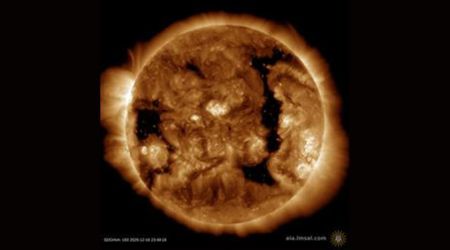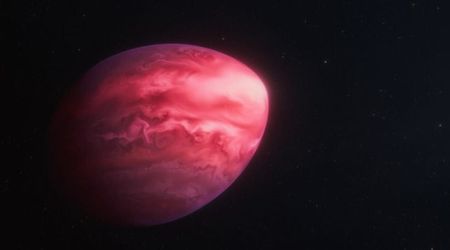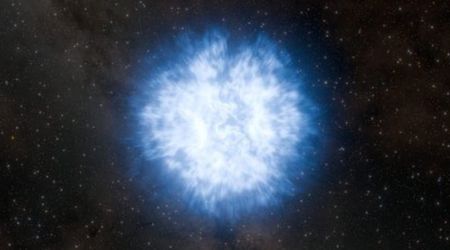white hole vs black hole

The universe is full of mysteries. One of the most fascinating objects is perhaps the most well-known astronomical object: a black hole. They are regions of space where the gravitational pull is so strong that nothing, not even light, can escape from them. White holes, on the other hand, are hypothetical objects; we have never seen one. They are supposedly the "opposite" of black holes: regions of space where matter can exit, but nothing can enter.
In this article, we will look at the differences between black holes and white holes. However, please keep in mind that we have never confirmed the existence of white holes, and everything we know about them is based on theory.
What are black holes?
Black holes are formed when massive stars collapse in on themselves. The gravitational pull of the stars' mass is so strong that it creates a "point of no return" known as the event horizon. This is the point beyond which nothing, not even light, can escape the black hole.
The event horizon is also the point where the black hole's mass is compressed into an infinitely small point, known as the singularity. The singularity is often described as a tear in space-time, the very fabric of the universe, as it is so dense that the laws of physics as we know them to break down.
Black holes are powerful objects, and their gravity greatly affects the surrounding space. For example, it is thought that every large galaxy in the universe has a supermassive black hole in its core.
Interesting facts about black holes
- It's impossible to directly observe a black hole.
- Black holes affect time too. For example, if you were to fall into a black hole, time would slow down for you.
- Our own milky way could host over 100 million black holes.
- Albert Einstein first predicted the existence of black holes in 1916
- The first black hole, Cygnus X-1, was discovered in 1964.
- The first image of a black hole was captured in 2019.
- One out of every thousand stars is massive enough to become a black hole.
- The closest black hole to Earth is called "The Unicorn". It is located about 1,500 light-years away from us.
- Black holes can swallow anything that gets too close to them, including moons, planets and entire stars.
- Two black holes can merge to form an even bigger black hole.
- Colliding black holes generate an incredible amount of energy in the form of gravitational waves that propagate through space-time.
- There are four types of black holes: stellar, intermediate, supermassive, and micro.
- If you fell into a black hole, you would die by spaghettification.
- We don't know what's on the other side of a black hole, nor if there is one.

What are white holes?
White holes are hypothetical objects; we have never seen one. They are supposedly the "opposite" of black holes: regions of space where matter can exit, but nothing can enter.
In many science-fiction stories, white holes are used as a way to travel through time or to other parts of the universe. They are called wormholes or Einstein-Rosen bridges. In reality, it is highly unlikely that white holes are just the other end of black holes. And since we have never really proved their existence, many theories about white holes are just speculation.
Some believe that white holes are what black holes become after they have completely evaporated, which can take trillions of years. Others have posited that the big bang happened from a white hole and an absurd amount of matter and energy were ejected from it.
White holes are a cosmic phenomenon that can be explained theoretically and mathematically, but they just don't fit what we know of reality, yet. The main block that comes from the 2nd law of thermodynamics: "the state of entropy of the entire universe, as an isolated system, will always increase over time". Since white holes spew out matter and energy into the universe, it violates that law...
Summary of the differences between a black hole and a white hole
- Black holes have been proven to exist, while white holes remain hypothetical.
- Black holes are regions of space where matter can enter while white holes are regions of space where nothing can enter.
- A black hole has an event horizon beyond which nothing can escape, whereas a white hole has an event horizon that can never be crossed, ever.
- In a black hole, the flow of spacetime goes inward from the universe, but for a white hole, it goes outwards into the universe.
- Things that fall into a black hole can affect its interior, whilst nothing can affect the interior of a white hole.

What would happen if a black hole and a white hole collided?
You might have heard of two black holes merging together back in 2015 when LIGO first detected gravitational waves. When two black holes collide, the merging event emits a huge amount of energy in the form of gravitational waves. And the two black holes become one bigger black hole.
But what if a black hole and a white hole were to collide? No one really knows for sure. Some scientists believe that the black hole would swallow the white hole, as it would be impossible for the black hole to enter the white hole. Now, weirder things might happen depending on the mass and size of the two objects.
In the below video, James from the Action Lab YouTube channel explains in more detail the different scenarios that could play out.
What happens if the black hole is more massive? What happens if the white hole is more massive? and what if they have a similar mass?
We just don't know yet. And that's the beauty of science, there are always more questions than answers. So, we keep exploring, learning and expanding our horizons. Hopefully, one day we might be able to answer these questions and unlock the mysteries of the universe. Odds of this happening during our lifetime? Very slim. But it's still fun to think about.


